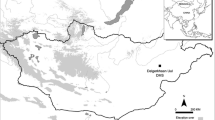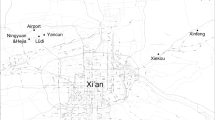Abstract
The development of iron technologies in mid–eighteenth Century Britain led to an explosion in the variety and scope of iron objects manufactured for the consumer market. One of the primary markets for iron goods was the Caribbean plantation complex. An astonishing amount of iron ware was shipped to Jamaica, where archaeological investigations at Marshalls Pen, a nineteenth-century coffee plantation, recovered a variety of iron tools and other metal objects from enslaved household contexts. A selection of these tools show evidence that the enslaved population of the plantation reshaped these tools for their own purposes.














Similar content being viewed by others
References
Allen, R. (2009). The British Industrial Revolution in Global Perspective. Cambridge University Press, Cambridge.
Armstrong, D. V. (1990). The Old Village and the Great House: An Archaeological and Historical Examination of Drax Hall Plantation St. Ann’s Bay, Jamaica. University of Illinois Press, Urbana.
Armstrong, D. V. (2010). Degrees of freedom in the Caribbean: archaeological explorations of transitions from slavery. Antiquity 84:146–160.
Armstrong, D. and Kelly, K. (2000). Settlement patterns and the origins of African Jamaican society: Seville Plantation, St. Ann’s Bay, Jamaica. Ethnohistory 7(2):369–397.
Ashton, T. S. (1963). Iron and Steel in the Industrial Revolution. Manchester, Manchester University Press, Manchester.
Birch, A. (1953). The Haigh Ironworks [Near Wigan], 1789-1856: a nobleman’s enterprise during the Industrial Revolution. Bulleting of the John Rylands Library 35(2):316-333.
Birch, A. (1967). The Economic History of the British Iron and Steel Industry, 1784-1879. Routledge, London.
British Parliamentary Papers. (1971). Select Committee Reports and Correspondence of the Trade and Commerce of the West Indies with Minutes of Evidence, 1806-49. Irish University Press, Shannon.
Carson, C. (1994) The Consumer Revolution in Colonial America: Why the demand? In Carson, C. C., R. Hoffman and P. J. Albert (eds.), Of Consuming Interest: The Style of Life in the Eighteenth Century. University Press of Virginia, Charlottesville, VA, pp. 444–482.
Chenoweth, J. (2017). Simplicity, Equality, and Slavery: An Archaeology of Quakerism in the British Virgin Islands, 1740-1780. University of Florida Press, Gainesville.
Colquhoun, P. (1814). A Treatise on the Wealth, Power and Resources of the British Empire in Every Quarter of the World. Joseph Mawman, London.
Curtain, P. (1969). The Atlantic Slave Trade: A Census. University of Wisconsin Press, Madison.
Davidson, J. M. (2014) Deconstructing the myth of the “Hand Charm”: Mundane clothing fasteners and their curious transformations into supernatural objects. Historical Archaeology 48(2):18–60.
Delle, James A. (2008) An Archaeology of modernity in colonial Jamaica. Archaeologies: The Journal of the World Archaeology Congress 4(1):87–109.
Delle, James A. (2009) The governor and the enslaved: archaeology and modernity at Marshalls Pen, Jamaica International Journal of Historical Archaeology 12(4):488–512.
Delle, J. A. (2011) The habitus of Jamaican plantation landscapes. In Delle, J.A., Hauser, M. and Armstrong, D.V. (eds.), Out of Many, One People: The Historical Archaeology of Colonial Jamaica. University of Alabama Press, Tuscaloosa, pp. 122–43.
Delle, J. A. (2014) The Colonial Caribbean: Landscapes of Power in the Plantation System , Cambridge University Press, Cambridge.
Delle, J. A. (2017) The plantation mode of production. In Modes of Production and Archaeology, Rosenwig, R. and Cunningham, R. (eds), University Press of Florida, Gainesville, pp. 311–333.
Delle, J. A. and K. R. Fellows (2014) Death and burial at Marshalls Pen, a Jamaican coffee plantation, 1814-1839: examining the end of life at the end of slavery. Slavery and Abolition 35(3):474–92.
Delle, J. A. and K. R. Fellows (2016) Life beyond the village: field houses and liminal space on a Jamaican coffee plantation. In Bates, L., Chenoweth, J. and Delle, J. A. (eds), Archaeologies of Slavery and Freedom in the Caribbean: The Spaces in Between. University Press of Florida, Gainesville, pp. 111–128.
Delle, J. A. and K. R. Fellows (2019) Variation within the village: housing enslaved laborers on coffee plantations in Jamaica. In Delle, J. A. and E. C. Clay (eds), Archaeology of Domestic Landscapes of the Enslaved in The Caribbean. University of Florida Press, Gainesville, FL, pp. 116–140.
Espersen, R. (2018) From Hell’s Gate to the Promised Land: perspectives on poverty in Saba, Dutch Caribbean, 1780 to the mid-twentieth Century. Historical Archaeology 52(4):773–97.
Fellows, K. R. and J.A. Delle (2015) Marroonage and the dialectics of spatial overeignty in Colonial Jamaica. In Current Perspectives on the Archaeology of African Slavery in Latin America, Funari,P and Orser, C.E. (eds), Springer Publishing, New York, pp. 117-132.
Goucher, C. (1990) John Reeder’s Foundry: a study of eighteenth-century African-Caribbean technology. Jamaica Journal 23(1):39-43.
Goucher, C. (1993) African metallurgy in the Atlantic World. The African Archaeological Review 11:197–215.
Goucher, C. (1999) African-Caribbean metal technology: forging cultural survivals in the Atlantic World. In Haviser, J.B. (ed.), African Sites Archaeology in the Caribbean, Markus Weiner, Princeton, pp. 143–156.
Goucher, C. (2014) Rituals of iron in the Black Atlantic World. In Ogiundiran, A. and Paula V. Saunders, P.V. (eds), Materialities of Ritual in the Black Atlantic. University of Indiana Press, Bloomington, pp. 108–124.
Hall, D. and Mintz, S. (1960) The origins of the Jamaican internal marketing system. Yale University Publications in Anthropology, n. 57.
Hauser, M. (2008) The Archaeology of Black Markets: Local Ceramics and Economies in Eighteenth-Century Jamaica. University Press of Florida, Gainseville
Hauser, M. (2011) Routes and roots of empire: pots, power, and slavery in the eighteenth-century British Caribbean. American Anthropologist 113(3):341–447.
Hauser, M. (2017) A political ecology of water and enslavement: water ways in eighteenth-century Caribbean plantations. Current Anthropology 58(2):227–256.
Higman, B. W. (1988) Jamaica Surveyed: Plantation Maps and Plans of the Eighteenth and Nineteenth Centuries. Institute of Jamaica, Kingston.
Higman, B. W. (1995) Slave population and economy in the British Caribbean, 1807-1834. University of the West Indies Press, Kingston.
Higman, B. W. (1998) Montpelier, Jamaica : A Plantation Community in Slavery and Freedom, 1739-1912. University of the West Indies Press, Kingston.
Higman, B. W. (2005) Plantation Jamaica, 1750-1850: Capital and Control in a Colonial Economy. University of the West Indies Press, Kingston.
Hobsbawn , E. (1999) Industry and Empire: The Birth of the Industrial Revolution. Penguin, London.
Hyde, C. K. (1977). Technological Change and the British Iron Industry, 1700-1870. Princeton University Press, Princeton.
Levine, M. A. (2020). The fabric of empire in a native world: an analysis of trade cloth recovered from eighteenth-century Otstonwakin. American Antiquity 85(1):51–71.
Long, E. (1774). A History of Jamaica or, General Survey of the Antient and Modern State of that Island. T. Lowndes, London.
Martindale, A. and Jurakic, I. (2006). Identifying expedient glass tools in a post-contact Tsimshian village. Journal of Archaeological Science 33(3):414–427.
Martindale, A., and Jurakic, I. (2015). Glass tools in archaeology: material and cultural change. Oxford Handbooks Online, accessed 13 July 2020.
Reilly, Matthew (2016a) “Poor Whites” on the peripheries: “Poor White” and Afro-Babadian interactions on the plantation. In Bates, L., Chenoweth, J. and Delle, J.A. (eds.), Archaeologies of Slavery and Freedom in the Caribbean: Exploring the Spaces in Between. University Press of Florida, Gainesville, pp. 49–78.
Reilly, Matthew (2016b) “Poor White” recollections and artifact reuse in Barbados: considerations for archaeologies of poverty. International Journal of Historical Archaeology 20(2):318–40.
Reilly, M. (2019) Archaeology Below the Cliff: Race, Class, and Redlegs in Barbadian Sugar Society. University of Alabama Press, Tuscaloosa.
Riden, P. (1977) The output of the British iron industry before 1870. The Economic History Review 30(3):442–459.
Silliman, S. (2010). Indigenous traces in colonial spaces: Archaeologies of ambiguity, origins, and practices. Journal of Social Archaeology 10(1):28–58.
Singleton, Theresa (2015) Slavery Behind the Wall: An Archaeology of a Cuban Coffee Plantation. University Press of Florida, Gainesville.
Smith, F. (2008) The Archaeology of Alcohol and Drinking. University Press of Florida, Gainesville.
Taylor, D. (1988) The Iron Industry 1700-1850. In Mastering Economic and Social History. Macmillan Master Series. Palgrave, London, 91–104.
Wilkie, L. A. (1996). Glass-knapping at a Louisiana plantation: African-American tools? Historical Archaeology 30(4):37–49.
Acknowledgments
We would like to extend our deepest gratitude to the many people who have supported this work over the years. In Scotland we would like to thank the Earl of Crawford, Lord Lindsay, and the Lindsay Trust who have provided frequent and unfettered access to their collection of family papers. The staff of the National Library of Scotland who curate that collection provide both a welcoming place for study and research and unparalleled assistance in those pursuits. The faculty, staff, and fellows of the Institute for Advanced Study in the Humanities at the University of Edinburgh provided fond fellowship and a wonderful facility during the last research trip to Edinburgh. In Jamaica, we are very grateful to Ann Sutton for allowing us access to her property for these investigations. Thanks also to the staff and directors of the Jamaica National Historical Trust, as well as the faculty and students of the Department of History and Archaeology at the University of the West Indies at Mona for their untiring support of this project. Special thanks go to the many graduate and undergraduate students—past and present--from North America who have contributed to this project, especially Elizabeth Clay, Jordan Pickrell, Janet Six, Ashley Tupper, Patrick Heaton, and Lizzie Martin. This research has been funded by the Wenner-Gren Foundation for Anthropological Research, the American Philosophical Society, the American Council of Learned Societies, Franklin and Marshall College, Kutztown University, Shippensburg University, and the Pennsylvania State System of Higher Education.
Author information
Authors and Affiliations
Corresponding author
Additional information
Publisher’s Note
Springer Nature remains neutral with regard to jurisdictional claims in published maps and institutional affiliations.
Rights and permissions
About this article
Cite this article
Delle, J.A., Fellows, K.R. Repurposed Metal Objects in the Political Economy of Jamaican Slavery. Int J Histor Archaeol 25, 998–1023 (2021). https://doi.org/10.1007/s10761-021-00587-7
Accepted:
Published:
Issue Date:
DOI: https://doi.org/10.1007/s10761-021-00587-7




